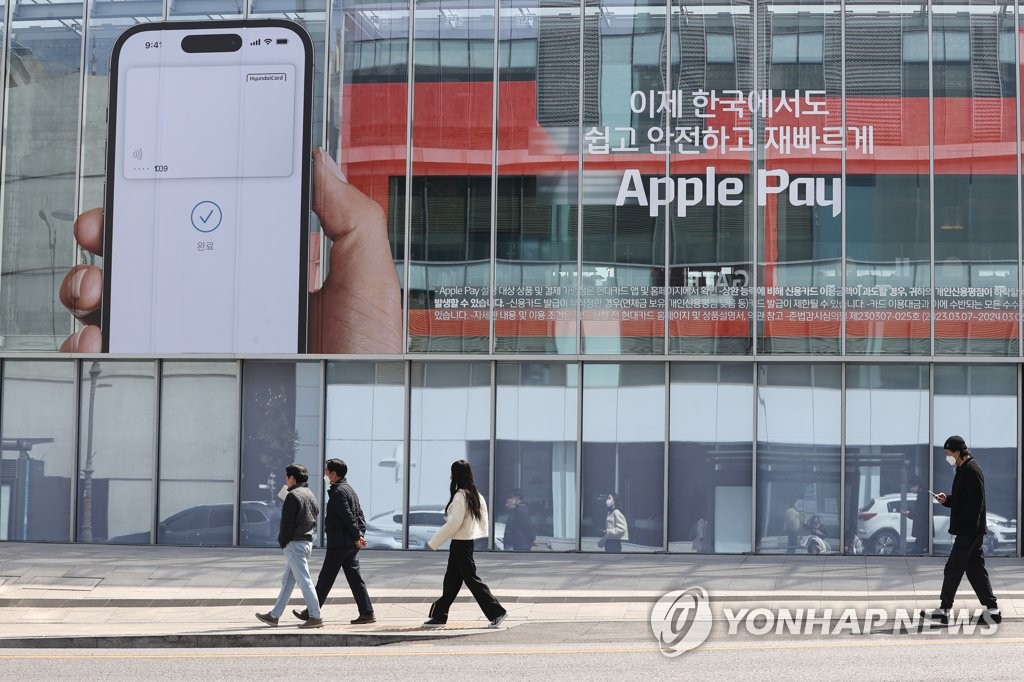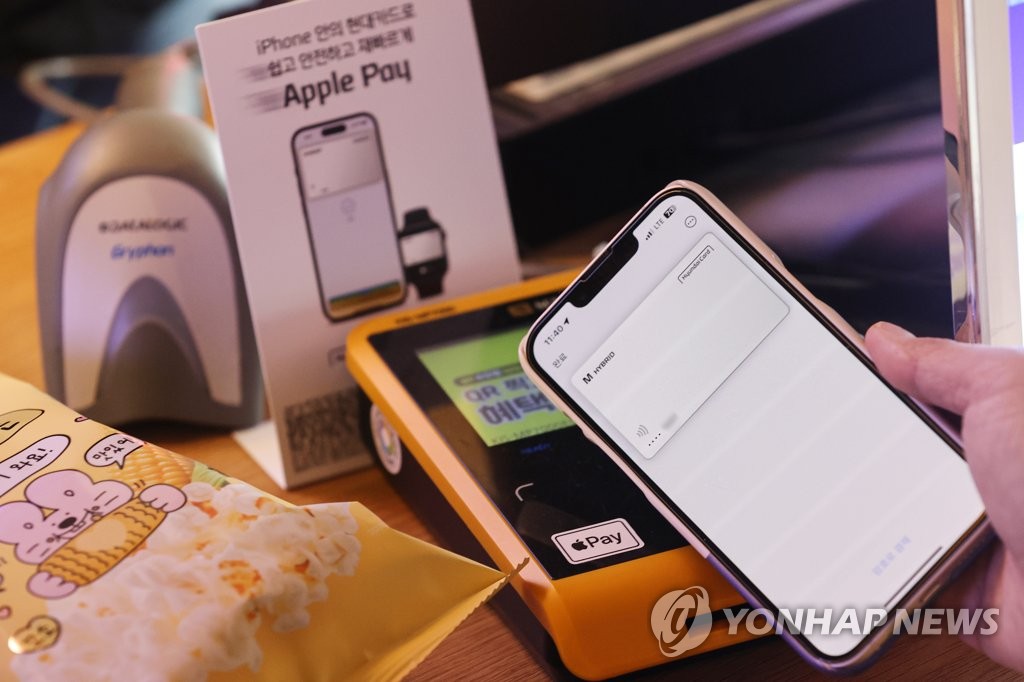- California Assembly OKs highest minimum wage in nation
- S. Korea unveils first graphic cigarette warnings
- US joins with South Korea, Japan in bid to deter North Korea
- LPGA golfer Chun In-gee finally back in action
- S. Korea won’t be top seed in final World Cup qualification round
- US men’s soccer misses 2nd straight Olympics
- US back on track in qualifying with 4-0 win over Guatemala
- High-intensity workout injuries spawn cottage industry
- CDC expands range of Zika mosquitoes into parts of Northeast
- Who knew? ‘The Walking Dead’ is helping families connect
Apple working on expanding Apple Pay service in S. Korea: senior executive
Apple Inc.’s long-awaited mobile payment service, Apple Pay, has finally landed in South Korea this week, some seven years after the service was first initiated in the United States.
It is available in local convenience stores, supermarkets, like Lotte Department Store, and coffee shops, like Paul Bassett, starting Tuesday.
To launch the service in South Korea, Apple signed an exclusive partnership deal with Hyundai Card Co., allowing credit card users with Apple devices, like the iPhone and Apple Watch, to enjoy the contactless payment system.

“It’s been really great to see the anticipation and excitement for Apple Pay to come to Korea, and we share this excitement,” Jennifer Bailey, vice president of internet services at Apple, said in a Zoom interview with Yonhap News Agency.
“Visa, Mastercard and local Hyundai Card users will be able to add their cards to Apple Pay and begin using Apple Pay to pay at top Korean retailers or use Apple Pay at millions of merchants when they travel abroad.”
It took more than five years to launch Apple Pay in Asia’s fourth-largest economy since Apple had first expressed its intention to enter the South Korean market, due to financial and technical issues over the near-field communication (NFC) system.
The NFC system, a short-range wireless protocol, is a little-known payment type in the country, where Samsung Electronics Co.’s digital payment service, Samsung Pay, using the magnetic secure transmission (MST) technology, is the most-used financial services app.
“All of those things are things that we worked on over the last several years to be able to bring Apple Pay to Korea,” she said. “We’re really excited to bring this new payment technology to our customers there, because we think they’re going to love it, and from a security and privacy standpoint.

Insiders have expected Apple Pay to be a key player in breaking the supremacy of Samsung Pay in the mobile payment market, citing Apple’s yearslong experience in the global digital payment industry and Korean iPhone users that account for more than 20 percent in the country.
But they also pointed out Apple Pay’s successful arrival in South Korea depends on the expansion of NFC infrastructure.
Industry data showed that out of 2.8 million businesses offering card services in South Korea, more than 90 percent are equipped with MST technology-based payment devices, which Samsung Pay is based on. Less than 10 percent have an NFC-based terminal for Apple Pay, which reportedly costs around 150,000 won (US$114).
Bailey said a growing number of Korean retailers will prepare NFC-supporting point-of-sale (POS) terminals to attract iPhone users before long. She cited that only 3 percent of U.S. retailers had NFC-based POS terminals when Apple Pay was first launched, but now the coverage is at 95 percent.
“What we found is that as people use Apple Pay and try it, they really love it and they begin to ask for it at merchants, which I think motivates merchant partners to begin the work to upgrade infrastructure they need to be able to take an NFC in-store payment,” she said.
The official also said Apple is considering expanding its Korean financial partners for Apple Pay in the future to offer broader payment service to its customers.
“We look forward to working with more card issuers in the future to bring this to their customers in Korea,” she said. “Apple Pay is open to any bank or card issuer that can meet the technical requirements to enable it. We look forward to working with additional issuers in Korea.”











